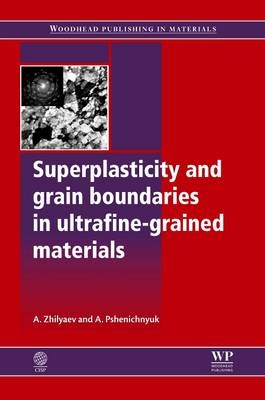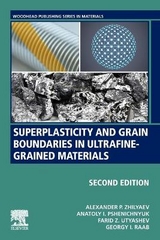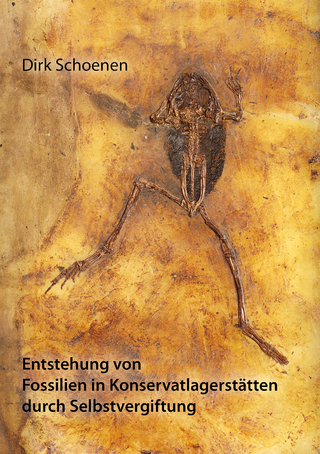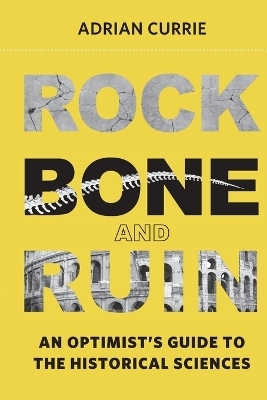
Superplasticity and Grain Boundaries in Ultrafine-Grained Materials
Woodhead Publishing Ltd (Verlag)
978-0-08-101731-9 (ISBN)
- Titel erscheint in neuer Auflage
- Artikel merken
Superplasticity and grain boundaries in ultrafine-grained materials discusses a number of problems associated with grain boundaries in metallic polycrystalline materials. The role of grain boundaries in processes such as grain boundary diffusion, relaxation and grain growth is investigated. The authors explore the formation and evolution of the microstructure, texture and ensembles of grain boundaries in materials produced by severe plastic deformation.
Written by two leading experts in the field, Superplasticity and grain boundaries in ultrafine-grained materials significantly advances our understanding of this important phenomenon and will be an important reference work for metallurgists and those involved in superplastic forming processes.
Dr A. I. Pshenichnyuk works at the Institute for Superplasticity of Metals, Russia. Both are noted for their research on superplasticity.
Introduction
Chapter 1: Structural Superplasticity of Polycrystalline Materials
1.1 Structural levels, spatial scales and description levels
1.2 Structural superplasticity: from the combination of mechanisms to cooperative grain boundaries sliding
1.3 Structural superplasticity: from meso-description to macrocharacteristics
Chapter 2: Characteristics of Grain Boundary Ensembles
2.1 Crystal geometry and structure of intercrystalline boundaries
2.2 Special grain boundaries in the monoclinic lattice
2.3 Description of the grain boundary misorientation distribution (GBMD)
2.4 Computer model of a polycrystal: a calculation algorithm
Chapter 3: Orientation-Distributed Parameters of the Polycrystalline Structure
3.1 The distribution function of the grains with respect to crystallographic orientations: calculation methods
3.2 Relationship between the grain boundary misorientation distribution and the ODF
3.3 Correlation orientation of adjacent grains: the concept of the basis spectra of misorientation of the grain boundaries
3.4 Modelling the misorientation spectra of the grain boundaries in the FCC crystals with modelling ODF
Chapter 4: Experimental Investigations of Grain Boundary Ensembles in Polycrystals
4.1 Diffraction methods of measuring misorientation
4.2 Experimental spectra of the grain boundaries in FCC polycrystals
4.3 Orientation distribution function in Ni–Cr alloy: experimental and modelling GBMDs
4.4 Special features of the grain boundaries in the FCC materials with a high stacking fault energy
Chapter 5: Grain Boundary Sliding in Metallic bi- and Tricrystals
5.1 Dislocation nature of grain boundary sliding (GBS)
5.2 Formulation of the model of stimulated grain boundary sliding
5.3 Formal solution and its analysis
5.4 Special features of pure grain boundary sliding
5.5 Local migration of the grain boundary as the mechanism of reorganisation of the triple junction: weak migration approximation
5.6 Variance formulation of the system of equations for the shape of the boundary and pile-up density
5.7 The power of pile-ups of grain boundary dislocations
Chapter 6: Percolation Mechanism of Deformation Processes in Ultrafine-Grained Polycrystals
6.1 Percolation mechanism of the formation of a band of cooperative grain boundary sliding
6.2 Conditions of formation of CGBS bands as the condition of realisation of the superplastic deformation regime
6.3 Shear rate along the CGBS band
6.4 Kinetics of deformation in CGBS bands
6.5 Comparison of the calculated values with the experimental results
Chapter 7: Percolation Processes in a Network of Grain Boundaries in Ultrafine-Grained Materials
7.1 Effect of grain boundaries on oxidation and diffusion processes in polycrystalline oxide films
7.2 High-resolution electron microscopy of zirconium oxide: grain clusters, surrounded only by special boundaries
7.3 Effect of the statistics of the grain boundaries on diffusion in zirconium oxide
7.4 Special features of oxidation kinetics under the effect of stresses at the metal/oxide boundary
7.5 Texture and spectrum of misorientation of the grain boundaries in an NiO film on (100) and (111) substrates: modelling and experiments
Chapter 8: Microstructure and Grain Boundary Ensembles in Ultrafine-Grained Materials
8.1 Methods of producing ultrafine-grained and nanostructured materials by severe plastic deformation
8.2 Effect of the parameters of quasi-hydrostatic pressure on the microstructure and grain boundary ensembles in nickel
8.3 Spectrum of misorientation of grain boundaries in ultrafine-grained nickel
8.4 Advanced methods of automatic measurement of the grain boundary parameters
8.5 The misorientation distribution of the grain boundaries in ultrafine-grained nickel: experiments and modelling
Chapter 9: Grain Boundary Processes in Ultrafine-Grained Nickel and Nanonickel
9.1 Grain growth kinetics in ECAP specimens
9.2 Activation energy and stored enthalpy in ultrafine-grained nickel
9.3 Evolution of the microstructure and texture in HPT nickel in annealing
9.4 Superplasticity of nanocrystalline nickel
Chapter 10: Duration of the Stable Flow Stage in Superplastic Deformation
10.1 Superplastic capacity and the rate sensitivity parameter
10.2 Description of thickness differences of a flat specimen in tensile deformation
10.3 Formation of thickness difference as a random process
10.4 Absorption condition and the equation for limiting strain
10.5 Some properties of limiting strain
Chapter 11: Derivation of Constitutive Equations in Multicomponent Loading Conditions
11.1 From the deformation mechanism to constitutive equations
11.2 Kinematics of polycrystalline continuum
11.3 Strain rate tensor determined by shear along the CGBS bands
11.4 Degenerate cases and variants of coaxiality of the tensors
Conclusion
Index
| Erscheinungsdatum | 07.07.2016 |
|---|---|
| Reihe/Serie | Woodhead Publishing in Materials |
| Verlagsort | Cambridge |
| Sprache | englisch |
| Maße | 156 x 234 mm |
| Gewicht | 460 g |
| Themenwelt | Naturwissenschaften ► Geowissenschaften ► Mineralogie / Paläontologie |
| Naturwissenschaften ► Physik / Astronomie ► Atom- / Kern- / Molekularphysik | |
| Technik ► Maschinenbau | |
| ISBN-10 | 0-08-101731-6 / 0081017316 |
| ISBN-13 | 978-0-08-101731-9 / 9780081017319 |
| Zustand | Neuware |
| Haben Sie eine Frage zum Produkt? |
aus dem Bereich



